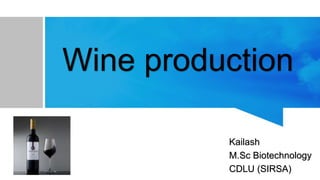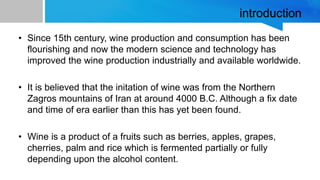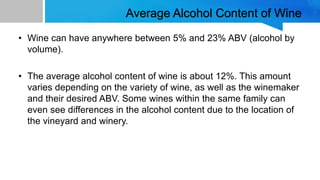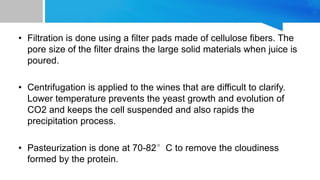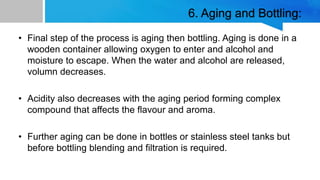Wine production involves several key steps: harvesting grapes, crushing and pressing them to extract juice, fermenting the juice into wine using yeast, clarifying the wine by removing solid particles, aging the wine in wooden barrels or tanks, and bottling the finished product. The average alcohol content of wine is about 12% but can range from 5-23% depending on the grape variety and winemaker. Wine has various health benefits including supporting longevity, heart health, preventing Alzheimer's and depression, and strengthening bones.
